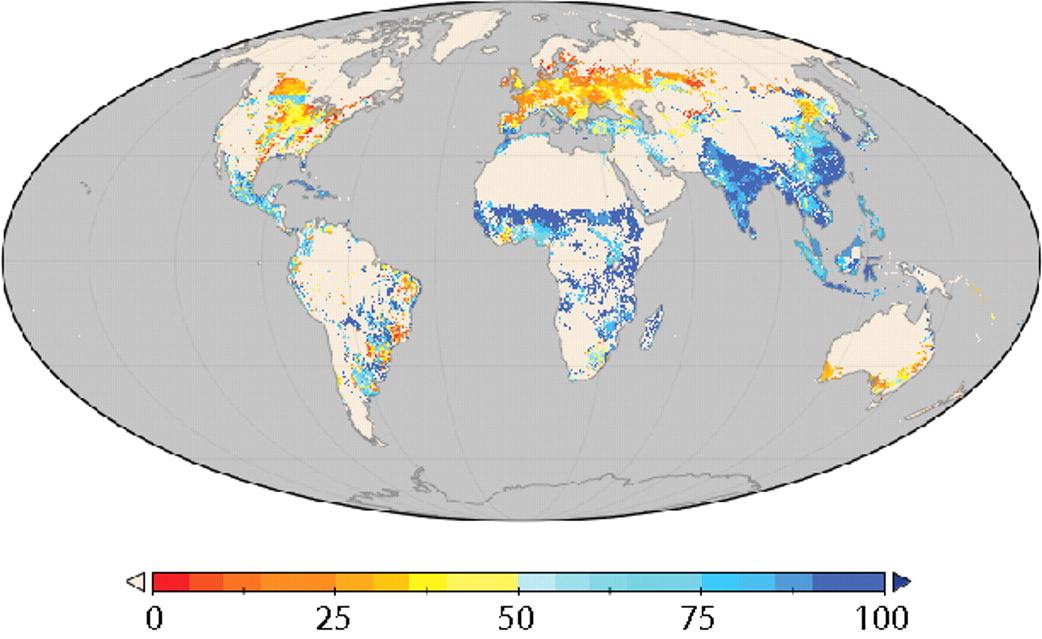Maybe ours was the straw that broke the camel’s back, but beekeeper Felicia Gilljam has now blogged her thoughts on Colony Collapse Disorder. Being scientifically cautious, I suspect, there’s a disclaimer: “Because I’m a beekeeper, apparently my opinion is considered ‘expert’.” More expert than many another commenter, I reckon. I’ll let you read it over there, but the executive summary is that Felicia is not sure how real the phenomenon is, especially in Europe. And perhaps the virus that has been associated with CCD gets a purchase because something else weakens the hive. She also raises the intriguing possibility that breeding bees to be better harvesters that are docile and don’t swarm may have brought along some other effects — like a weaker immune system — as hitchhikers.
Vineyards benefit from integrated pest management
In Austraila, Fosters Wine Estates reduces pests by reducing pesticides; Sir Les Patterson unavailable for comment.
We don’t grow food
 Our cartography nut is otherwise engaged, temporarily, but I know he’d love this one. Blue shows agricultural production consumed directly by people: food. Orange-red is consumed indirectly in processed products, mostly feed for livestock but also things like cotton and coffee. Notice anything interesting about the distribution? Yeah, me too.
Our cartography nut is otherwise engaged, temporarily, but I know he’d love this one. Blue shows agricultural production consumed directly by people: food. Orange-red is consumed indirectly in processed products, mostly feed for livestock but also things like cotton and coffee. Notice anything interesting about the distribution? Yeah, me too.
Hat tip to Resilience Science, which gives links to the original study.
Names from the Biodiversity Heritage Library
XML SOAP names are available from the Biodiversity Heritage Library: no geeks available for comment (but I suspect this could be important).
Some people don’t want to register their traditional knowledge
The ingratitude! Apparently villagers in the Uttar Kannada district of the Western Ghats in India have not been entirely truthful with the folks collecting information for the local Biodiversity Register. These registers have been promoted as a way of collecting local traditional knoweldge in order to protect against biopiracy and give local people some sort of intellectual property rights. But, like jealous cooks at a bake-off, some seem to withholding information.
“People have not given details of prescriptions, compositions and the methods used to cure ailments the traditional way using plants with medicinal properties. The information we have might be incomplete. In some cases, people have just mentioned plants but haven’t revealed how they use them for treatment.â€
That’s according to G M Bhatt, president of the Biodiversity Management Committee of Heggarni. Villagers say they fear that they will lose control of their knowledge and their resources, even if it is “protected” in a biodiversity register.
They may have a point. According to the report, when it was discovered that a local plant, Malabar tamarind (Garcinia gummigutta), contained a compound that could “cure obesity” it was rapidly overharvested and is now in short supply. (That could well be true; the GEF Small Grants Programme funds a project on the conservation and domestication of G. gummigutta.)
What I wonder is, where did villagers ever get the idea that their local resources might be open to overexploitation?